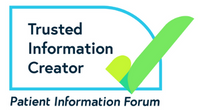Symptoms & Effects of 5q Spinal Muscular Atrophy – Type 3
Symptoms & Effects of 5q Spinal Muscular Atrophy – Type 3
This page is for families, friends and healthcare professionals who want to know more about SMA Type 3.
SMA Type 3 is a form of 5q SMA. Please see our guide What is 5q SMA? for information about the cause, diagnosis, inheritance and how many people are affected.
Before the new drugs for 5q SMA were developed, clinicians studied the effects of SMA on people. This is called the ‘natural history’ of the condition. It was different for each ‘Type’ of SMA.
SMA Type 3 is sometimes further divided into:
- SMA Type 3a – symptoms of muscle weakness usually begin between 18 months and 3 years of age.
- SMA Type 3b – symptoms usually begin after 3 years, but before adulthood.
Your clinician will advise you if they would expect your child’s SMA to follow the ‘natural history’ of SMA Type 3 if they do not have drug treatment. They will discuss the latest clinical trial and real-world evidence for these drug treatments. They will tell you what you might expect if your child is treated.
Our Guide to Drug Treatments > covers questions and topics that you may wish to consider in your discussions with your child’s clinical team.
In the natural history of SMA Type 3, each child is affected differently. In general, children are bright and engaging. However, their SMA causes:
- muscle weakness on both sides of the body
- muscle weakness closest to the centre of the body. These muscles are more severely affected than those furthest away
- legs that are weaker than arms.
Intellectual and sexual development1 is not affected.
As children get older, their SMA usually causes them to have:
- difficulties with standing and walking. This usually happens later for children with SMA Type 3b than for children who develop symptoms at an earlier age.
- difficulties keeping up with daily activities. For example, if they have been able to walk or climb stairs, they may lose this ability. Some children may fall more easily because of their muscle weakness. If they are sitting on the floor, they may need help to get up.
- muscles supporting the spinal column that are weakened. This means that some children develop a sideways curvature of their spine (scoliosis)2.
- a reduced ability to move due to some joints becoming tight (contractures). This further restricts their range of movement.
- a tendency to become weaker after infections and at times of major growth, such as puberty.
Some children, young people and adults will need:
- help with daily tasks. This may include washing, dressing and undressing
- to use a manual or powered wheelchair for independent mobility
- help getting to and from, and sitting on, the toilet. Their bladder and bowel control is not affected,
Fewer people with SMA Type 3 have swallowing or breathing difficulties. Life expectancy is not usually affected3.
Most clinical trials and studies of drug treatments for SMA Type 3 have focused on their effects on motor milestones gained in childhood. There is now more understanding of the importance of other outcomes that affect quality of life for children, young people and adults. This includes respiratory outcomes, fine motor skills and fatigue levels.
Changing outcomes
In the UK, from late 2019 onwards some children with SMA Type 3 will have started ongoing treatment with either Spinraza™ / Nusinersen. For adults, this possibility came later. More recently, ongoing treatment with Evrysdi™ / Risdiplam also became a possibility for children and adults.
Many children with SMA Type 3 have gained strength, movement and better health with treatment. Symptoms have stabilised for many adults, with some seeing improvements.
How SMA will impact the health and daily life of a treated person living with SMA Type 3 today – and how the natural history of their condition may change – is very individual. It will be influenced by factors including:
- the age at which symptoms first appeared,
- the severity of symptoms,
- how early any treatment was started and
- their individual response to treatment.
Though they can alleviate some symptoms, none of the drug treatments are a cure. For children and adults, they must be combined with the best supportive care and management of symptoms to ensure the best possible outcomes for each individual.
Nationally and internationally expert clinicians, researchers and people living with SMA are working together to review and update guidelines for best supportive care and management of symptoms.
- See: SMA Care UK >
It is important that you feel able to discuss any questions you have with your child’s clinical team.
- Montes J et al. (2009) Clinical outcome measures in spinal muscular atrophy, J Child Neurol 24: 968-978.
- Mercuri E, et al. (2012) Childhood spinal muscular atrophy: controversies and challenges. Lancet Neurol 11: 443-452.
- Zerres K et al. (1997) A collaborative study on the natural history of childhood and juvenile onset proximal
spinal muscular atrophy (type II and III SMA): 569 patients. J Neurol Sci 146: 67-72
Was this page useful?
 Version 5
Version 5
Author: SMA UK Information Production Team
Last updated: June 2025
Next full review due: June 2028
Links last checked: June 2025
This page, and its links, provide information. This is meant to support, not replace, clinical and professional care.
Find out more about how we produce our information >.
